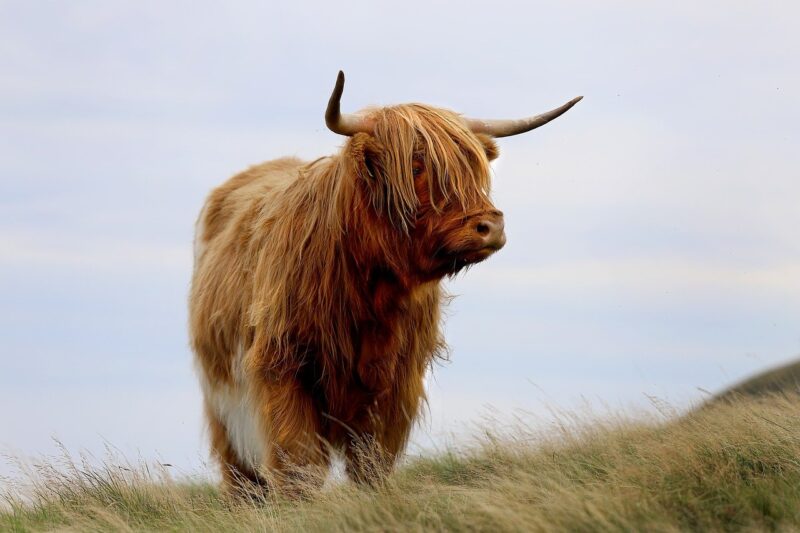How Cow Brains Became a Delicacy in Certain Cultures
November 13, 2024

Cow brains, often considered an unusual food choice in many cultures, have gained a unique place in culinary traditions around the world. Celebrated for their delicate taste and creamy texture, cow brains are not just a food item; they symbolize deeper cultural narratives and represent a connection to traditions and communities that cherish every part of the animal.
1. The Origins of Eating Cow Brains
Historically, consuming offal, including brains, has roots in the need to utilize every part of the animal. In many rural communities, resource scarcity drove people to find creative ways to make use of all available food sources, resulting in the practice of cooking and consuming organ meats. Cow brains, being rich in nutrients and fats, were especially valued by those who could acquire them.
Many ancient cultures saw organ meats as a delicacy. For instance, in parts of Europe, particularly France and Spain, delicate dishes using brains have been crafted for centuries. Traditional dishes feature ingredients that complement the richness of the brains, enhancing their flavor.
2. Nutritional Benefits of Cow Brains
Cow brains are a source of vital nutrients, including:
- Protein: Like most organ meats, cow brains are highly nutritious, offering essential amino acids that contribute to overall health.
- Omega-3 Fatty Acids: Cow brains contain omega-3s, which are crucial for brain health and cognitive function.
- Vitamin B12: B12 levels in brains are high, aiding in energy production and neural function.
- Health Benefits: Some claim that consuming cow brains may support cognitive health due to its fatty acid profile. This association often ties into traditions where organ meats are believed to impart the strength of the animal to those who consume them.
While modern food safety concerns have caused a decrease in brain consumption in some areas due to health issues linked to diseases like BSE (Bovine Spongiform Encephalopathy), certain cultures continue to savor cow brains as a delightful dish.
3. Cow Brains in Different Cultures
Cow brains feature prominently in various cuisines around the globe:
a. Latin American Cuisine
In countries like Mexico and Brazil, cow brains are often used in traditional dishes.
- Tacos de Sesos: In Mexico, taco stands often serve tacos filled with sautéed cow brains, seasoned with spices and topped with fresh salsa. The dish highlights the rich, creamy flavor of the brains and represents local street food culture.
b. Indian Cuisine
In parts of India, cow brains are included in rich curries.
- Brain Masala: Cow brains are cooked in a spicy and aromatic sauce, served with naan or rice. The culinary practice reflects the Indian ethos of using every part of the animal, preserving culinary tradition across generations.
c. French Cuisine
In France, brain dishes are often highlighted in fine dining.
- Cervelle de Veau: Veal brains are delicately sautéed and served with sauces, lending their creamy texture to elegant meals. This dish showcases the French dedication to haute cuisine and elevates offal to gourmet status.
4. Ethical and Environmental Considerations
The consumption of cow brains raises ethical questions regarding animal welfare and sustainability. Advocates of nose-to-tail eating argue that utilizing every part of the animal is more environmentally friendly, reducing waste compared to more conventional meat sources. Ethical farming practices, where animals are raised with care, are often promoted to ensure humane treatment.
Moreover, the reduction of food waste is a growing concern, as many countries battle issues with unnecessary waste in the food supply. Eating organ meats, including brains, aligns with a commitment to sustainability and responsibility in dietary choices.
5. How to Prepare Cow Brains
Cooking cow brains involves specific methods to ensure safety and taste:
- Preparation: Before cooking, it’s important to soak the brains in water and vinegar to remove any impurities. Rinse thoroughly to prepare them for cooking.
- Cooking Techniques: Cow brains can be sautéed, grilled, or added to soups and stews. Flaunting their versatility, they can be incorporated into a wide range of recipes, and their subtle flavor absorbs spices beautifully.
- Serving Suggestions: Pair cooked brains with fresh herbs, citrus, or sauces to enhance their flavor. In many cultures, they are served with sides that complement their rich texture, such as crusty bread or vibrant salads.
Conclusion: Embracing Culinary Diversity
As global culinary boundaries continue to blur, cow brains represent one of the fascinating interactions between tradition, sustainability, and flavor. By embracing diverse foods, we open ourselves to new tastes and experiences while often supporting agricultural practices that respect the animals and the environment. Whether enjoyed as a rich taco filling, a spicy curry, or a high-end restaurant dish, cow brains hold a unique place in the hearts and palates of many cultures. They challenge our perceptions of food and remind us of the beauty of culinary diversity.
Are you ready to explore a dish that not many will dare to venture into? Cow brains have a story to tell, and tasting them is a journey through culture, tradition, and taste that many have warmly embraced.







